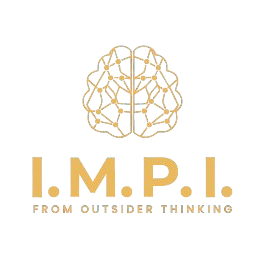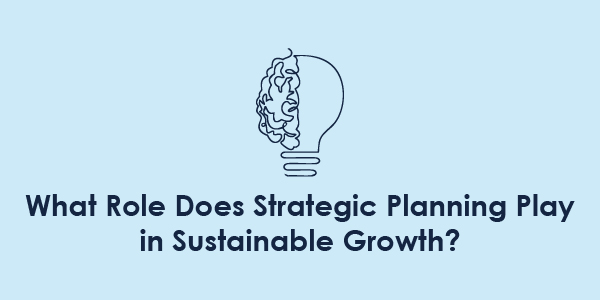In a rapidly changing world, sustainable growth has become a priority for organizations, as they aim not only for immediate success but for long-term stability and resilience. Strategic planning is at the core of achieving this sustainable growth. It involves developing a clear roadmap that aligns with an organization’s mission, vision, and values to ensure it can adapt and thrive, regardless of external challenges. Strategic planning enables organizations to make informed decisions, use resources efficiently, and stay agile in the face of change. Let’s delve into how strategic planning drives sustainable growth and why it’s indispensable for long-term success.
1. Establishing a Long-Term Vision and Mission
The foundation of strategic planning begins with a clear vision and mission. These elements define an organization’s purpose, values, and long-term goals. By setting a clear vision, organizations can focus on where they want to go and what they aim to achieve. This clarity is crucial because sustainable growth requires more than just profits; it demands a purpose-driven approach that resonates with stakeholders, including customers, employees, and investors.
A well-defined mission and vision provide direction for strategic planning, ensuring that growth objectives align with the core principles of the organization. This alignment keeps the organization’s goals focused on a sustainable path and creates a unified purpose that motivates teams to work toward a common goal, enhancing overall resilience and commitment.
2. Assessing and Mitigating Risks
One of the key roles of strategic planning in sustainable growth is its focus on risk assessment and mitigation. Sustainable growth depends on an organization’s ability to anticipate potential challenges and navigate uncertainties effectively. During the strategic planning process, organizations conduct thorough risk assessments, evaluating external factors like market trends, economic shifts, technological advancements, and internal factors such as resource constraints and operational weaknesses.
By identifying these risks, organizations can develop strategies to mitigate their impact, whether through diversification, investment in new technologies, or skill development for employees. This proactive approach helps organizations avoid costly setbacks and ensures they can adapt to changing circumstances without compromising their long-term goals.
3. Enhancing Resource Efficiency
Strategic planning is essential for optimizing resource allocation, which is critical for sustainable growth. Resources such as time, finances, and human capital are finite, so using them efficiently ensures that an organization can grow without overextending itself. During the strategic planning process, organizations assess their current resource capacity and determine where to focus investments for maximum return.
This step involves prioritizing projects and initiatives that align with long-term goals, while also discontinuing or reallocating resources from activities that do not contribute to sustainable growth. Efficient resource allocation not only reduces waste but also allows organizations to reinvest in areas that foster innovation, strengthen capabilities, and enhance competitive advantage.
4. Promoting Adaptability and Resilience
In today’s dynamic business environment, the ability to adapt is crucial for sustainable growth. Strategic planning encourages organizations to be forward-thinking and to anticipate future changes in the marketplace. Through scenario planning and regular performance evaluations, strategic planning helps organizations build resilience by preparing for a range of possible outcomes.
By embedding adaptability into the strategic plan, organizations can pivot quickly when faced with disruptions, such as economic downturns, technological changes, or shifts in consumer preferences. This adaptability ensures that growth is not only consistent but also sustainable, allowing organizations to evolve in response to external pressures rather than becoming vulnerable to them.
5. Fostering Innovation for Long-Term Value
Innovation is a major driver of sustainable growth, and strategic planning plays a crucial role in nurturing it. By setting long-term goals and priorities, strategic planning encourages organizations to invest in research, development, and innovation. These investments may involve new product development, exploring emerging markets, or adopting cutting-edge technologies to improve efficiency and productivity.
When strategic planning prioritizes innovation, it enables organizations to stay relevant and competitive over time. Sustainable growth is not just about maintaining the status quo but about evolving and adding value that meets the changing needs of customers. Innovation-driven growth strategies help organizations stay ahead of competitors, increase customer satisfaction, and ultimately contribute to a more sustainable and prosperous future.
6. Aligning Stakeholders for Unified Growth
Sustainable growth requires the alignment and commitment of multiple stakeholders, including employees, customers, investors, and communities. Strategic planning fosters this alignment by ensuring that each stakeholder’s interests are considered and incorporated into the organization’s growth strategy. For instance, a company committed to environmental sustainability will develop a strategic plan that aligns with eco-friendly practices and transparent supply chains.
This alignment strengthens relationships with stakeholders, who increasingly value ethical and sustainable practices. When employees, customers, and investors share the organization’s values, they are more likely to remain loyal and engaged, creating a strong foundation for long-term success. Strategic planning communicates a unified vision and strategy, encouraging stakeholder support and creating a collaborative atmosphere that drives sustainable growth.
7. Setting Measurable Goals and Tracking Progress
Strategic planning also plays a vital role in setting measurable goals, which are essential for tracking progress toward sustainable growth. These goals allow organizations to monitor their performance, assess their strategies, and make adjustments as needed. Sustainable growth is not a one-time achievement but an ongoing process that requires continual assessment.
By defining clear performance indicators, organizations can gauge their effectiveness, identify areas for improvement, and adapt strategies to stay on course. Regular tracking of progress ensures that the organization remains committed to its long-term goals and can pivot when necessary, keeping growth efforts sustainable and focused.
Wrapping Up
Strategic planning is more than just a management tool; it is the backbone of sustainable growth. By establishing a clear vision, assessing risks, optimizing resources, fostering innovation, and aligning stakeholders, organizations create a comprehensive approach to growth that extends beyond short-term gains. Strategic planning provides the foresight and flexibility needed to navigate uncertainties and adapt to change, ensuring that growth is resilient and purpose-driven.
Ultimately, sustainable growth is about achieving lasting impact and value. When an organization’s growth strategy is rooted in thoughtful, strategic planning, it builds a strong foundation that supports longevity, profitability, and positive societal impact. Organizations that prioritize strategic planning are better positioned to achieve sustainable growth, leaving a lasting legacy of success and innovation in their industries.

